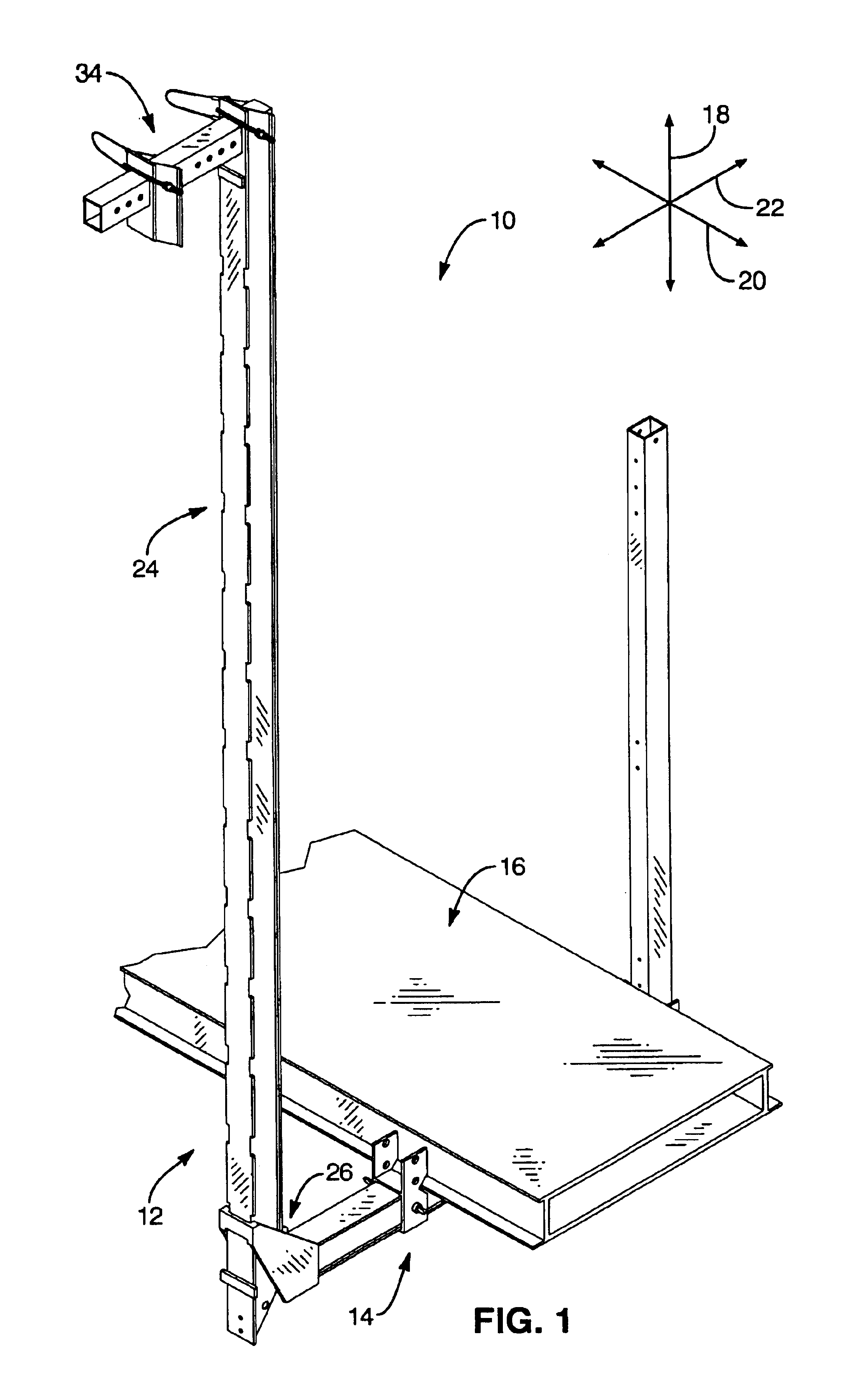Hanging scaffold support
a technology for scaffolding and supports, applied in the direction of scaffold accessories, machine supports, building scaffolds, etc., can solve the problems of limited utility of ladders, impracticality of scaffolding built from the ground up, and heavy scaffolding, so as to facilitate the insertion of hangers, prevent shifting or twisting, and facilitate the securement of working surfaces
- Summary
- Abstract
- Description
- Claims
- Application Information
AI Technical Summary
Benefits of technology
Problems solved by technology
Method used
Image
Examples
Embodiment Construction
[0036]It will be readily understood that the components of the present invention, as generally described and illustrated in the Figures herein, could be arranged and designed in a wide variety of different configurations. Thus, the following more detailed description of the embodiments of the system and method of the present invention, is not intended to limit the scope of the invention. The scope of the invention is as broad as claimed herein. The illustrations are merely representative of certain, presently preferred embodiments of the invention. Presently preferred embodiments of the invention will be best understood by reference to the drawings, wherein like parts are designated by like numerals throughout.
[0037]Referring to FIG. 1, an apparatus 10 may include one or more scaffold supports 12 providing one or more bases 14 for supporting a work surface 16. The work surface 16 (or deck 16) may be embodied as a plank or planks made of wood, aluminum, ferrous alloy, or the like. A ...
PUM
 Login to View More
Login to View More Abstract
Description
Claims
Application Information
 Login to View More
Login to View More - R&D
- Intellectual Property
- Life Sciences
- Materials
- Tech Scout
- Unparalleled Data Quality
- Higher Quality Content
- 60% Fewer Hallucinations
Browse by: Latest US Patents, China's latest patents, Technical Efficacy Thesaurus, Application Domain, Technology Topic, Popular Technical Reports.
© 2025 PatSnap. All rights reserved.Legal|Privacy policy|Modern Slavery Act Transparency Statement|Sitemap|About US| Contact US: help@patsnap.com



